How to Become a Reassurance Expert, on a Me-First Basis
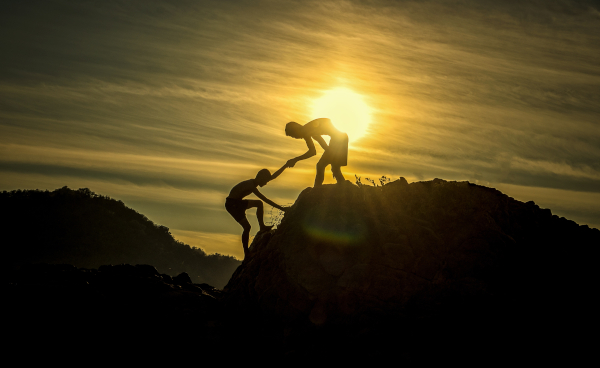
How to Become a Reassurance Expert, on a Me-First Basis
Whew! When those around us are in fear, how can we be most in service to them?
Heroic emotional rescue is exhausting—we may not have it in us to support others when we ourselves are tired, and possibly just as afraid. We need a me-first way of healing, so that we feel better, too, even as we support others.
 Teachings from the Water element can give us what we need, to stand like a lighthouse in the storm of strong emotions. These are practices that affect the body, mind, and spirit, and what’s best about them is that you don’t have to master them in order to receive significant benefit. They all work according to what I call The Law of Half-Assed Three Percent—meaning, you don’t have to be perfect. You don’t even have to be good at this. You just need to accomplish a half-assed three percent attempt, and clinical benefits will start to accrue in your body, mind, and spirit. Of course, more is better, but often it starts with just three percent and builds from there.
Teachings from the Water element can give us what we need, to stand like a lighthouse in the storm of strong emotions. These are practices that affect the body, mind, and spirit, and what’s best about them is that you don’t have to master them in order to receive significant benefit. They all work according to what I call The Law of Half-Assed Three Percent—meaning, you don’t have to be perfect. You don’t even have to be good at this. You just need to accomplish a half-assed three percent attempt, and clinical benefits will start to accrue in your body, mind, and spirit. Of course, more is better, but often it starts with just three percent and builds from there.
So what can we do, to practice health in the midst of fear, and bring reassurance to others on a me-first basis? Remember, reassurance does not mean denying the unknown or hiding from potential dangers. It means connecting to our deepest resources so that we can assess our circumstances with wisdom, and respond from deep insight.
For a more theoretical understanding of the transformation from Fear to Wisdom, see last week’s blog. Here, we are going to go over more closely the actual mechanics of the body-felt shift called reassurance—in ourselves first, so that we can offer it to others.
It All Begins with Breathing
 Every time anyone tells me to breathe more deeply and slowly, I get so annoyed. I don’t want to! I always feel initially resistant to this amazingly simple piece of advice, and yet it really does make a difference. I have come to suspect that my resistance is precisely because it is so powerful. It is akin to a small ego-death, to allow my deeper slower breathing to dissipate the momentum of freaking out.
Every time anyone tells me to breathe more deeply and slowly, I get so annoyed. I don’t want to! I always feel initially resistant to this amazingly simple piece of advice, and yet it really does make a difference. I have come to suspect that my resistance is precisely because it is so powerful. It is akin to a small ego-death, to allow my deeper slower breathing to dissipate the momentum of freaking out.
Give it a try right now. Take a deep breath. Now take another, slower. Continue, slowly.
Can you feel the part of you that is fighting it all the way, that wants to forget about breathing and go back to defending your stress-state? I really doubt that I am the only person like this, who on some level does, but on another level really doesn’t want to calm down.
If you are not prone to fighting calm, good for you. If you are prone to resisting some of your own best efforts, welcome to sheepish awareness of the ways that emotions self-perpetuate.
Fear especially can jump up and down inside of us, shouting, “I AM VERY IMPORTANT! FEAR IS THE ONLY THING THAT WILL KEEP YOU SAFE.”
This is false. Any martial artist knows this. Alert calm is much safer, and breathing pro-actively is the first step in ramping down the momentum of unrooting, ungrounding fear in our bodies.
Don’t worry if it only helps a little. Keep breathing deeply and slowly into your low belly. Do not listen to the voices that tell you it’s not going to work, it’s not working, it’s not worth trying. These voices are not from the heart, and they are not your friends. In fact, that is our next topic: healthy and unhealthy voices of fear.
Inner Fear Voices
One of the most important practices that we can take on during uncertain times, after starting to breathe more slowly and deeply into our low belly, is vetting our inner fear voices.
We all have many voices inside of us, telling us, “Don’t do this,” or “Oh you’d better do that.” Some of us hear them as clearly as spoken words; for others, they feel more like an impulse or a hunch.
It is important to discern between the voices of health inside of us and voices that are not healthy. People who have overcome addictions, or learned anger management, have learned which voices inside them are coming from health; and which are important just to recognize, and then let go.
Our breathing can be a very good litmus test for healthy or unhealthy fear voices. If a fear-voice inside of you is making you breathe more shallowly and quickly, and it feels as though it is pulling you upward, out of your feet, that is not a voice of healthy fear! That is anxiety, which is useless. You can tell that voice, “Thank you for sharing,” and then dismiss it.
Don’t worry if it comes right back. Thank it for sharing it again, and dismiss it again.
If, as you listen to the voice, it brings you into deeper breathing, with a greater feeling of weight as you connect with the ground, that is a healthier fear voice.
Note that sometimes, our healthy and unhealthy fear voices are saying the exact same thing! Follow only the healthy fear voice anyway—because it is better for your body, and because where it leads next may not be the same at all.
Stand with Weight
 Unhealthy fear uproots us, propelling us into unhealthy actions and decisions. This is why remaining rooted is important. This is why we are breathing into the low belly, and why we are staying in touch with our feet. Check right now, do your feet seem very far away? If so, that is s sign that you are in your head. It’s time to begin settling. Let’s do it together.
Unhealthy fear uproots us, propelling us into unhealthy actions and decisions. This is why remaining rooted is important. This is why we are breathing into the low belly, and why we are staying in touch with our feet. Check right now, do your feet seem very far away? If so, that is s sign that you are in your head. It’s time to begin settling. Let’s do it together.
Please stand as you read this. As you breathe into your low belly, see if you can allow your full weight to settle, like a big boulder in a field that no one would even think of trying to move because it is so heavy.
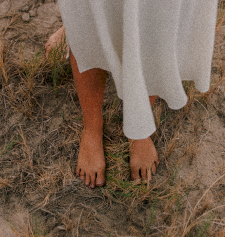 Let your feet rest firmly on the ground with weight equally distributed on both the back and the front of your feet (toes and heels). This is very important for calming the nervous system in times of fear. Putting our weight on the front of the feet is the position for movement and action; if we do this when there is no action to take, or while we are still considering the healthy course of action, this will just cause useless anxiety. Giving more weight to the heels is the position for stability and rest.
Let your feet rest firmly on the ground with weight equally distributed on both the back and the front of your feet (toes and heels). This is very important for calming the nervous system in times of fear. Putting our weight on the front of the feet is the position for movement and action; if we do this when there is no action to take, or while we are still considering the healthy course of action, this will just cause useless anxiety. Giving more weight to the heels is the position for stability and rest.
Also notice: are your knees unlocked, so that your pelvis is solidly supported? Many people unconsciously lock their knees, making it very difficult to be rooted and grounded.
Sinking into the pelvis, and empowering the pelvis, is essential. One of my favorite ways to do this is to pretend that you are wearing a utility belt with a lot of tools on it. You don’t even need to know what they all are—they are your as-yet-undiscovered resources. Who knows what amazing tools you’ve got on your utility belt?
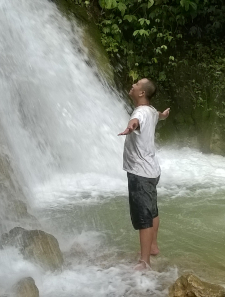 Consider practicing with an actual utility belt. I’m not kidding; I’ve suggested this to many people who were having anxiety and lack of confidence, and it can be life-changing. Buy or create a make-shift tool belt, and walk around the house wearing it. Hang a bunch of “tools” on it—it doesn’t matter what they are—kitchen stuff, whatever. The feeling of the weighted utility belt on the hips, sinking the pelvis, changes a person’s posture in a very specific way. Some studies have actually shown that this postural change raises testosterone levels. Walking as though wearing a tool belt really tonifies a person’s Water element, and helps transform fear to wisdom (also translated as “basic life know-how”). Try it.
Consider practicing with an actual utility belt. I’m not kidding; I’ve suggested this to many people who were having anxiety and lack of confidence, and it can be life-changing. Buy or create a make-shift tool belt, and walk around the house wearing it. Hang a bunch of “tools” on it—it doesn’t matter what they are—kitchen stuff, whatever. The feeling of the weighted utility belt on the hips, sinking the pelvis, changes a person’s posture in a very specific way. Some studies have actually shown that this postural change raises testosterone levels. Walking as though wearing a tool belt really tonifies a person’s Water element, and helps transform fear to wisdom (also translated as “basic life know-how”). Try it.
And pass it on! Many of us have family members or other loved ones who are seeking reassurance and support at this time. If you are with someone else, it is helpful to imagine yourself and the person to whom you are talking as being heavy enough to have settled at the bottom of the ocean together. The utility belt is like a diver’s belt, allowing us to drop and settle.
Sitting with Weight
We can keep our utility belt on when we sit and sit with weight. Have a seat right now, and check: How tense is your butt? Let it go, at least three percent, and maybe much more. How much tension do you really need in all of the muscles in your whole body, in order to stay in your chair? How much can you truly delegate to the chair itself, and allow yourself to be supported? Are your feet in contact with the floor, drawing strength from it and resting in deep stability?
 When sitting, don’t cross your legs! Be aware that your feet and other people’s feet have “tree roots,” and are communicating through these roots that go deep into our common ground. This awareness is an important part of creating a sense of security in our connection with others, even when we are alone—perhaps especially when we are alone. When our roots are connected, then even when we are alone we are not isolated—we are connected to the shared roots of life.
When sitting, don’t cross your legs! Be aware that your feet and other people’s feet have “tree roots,” and are communicating through these roots that go deep into our common ground. This awareness is an important part of creating a sense of security in our connection with others, even when we are alone—perhaps especially when we are alone. When our roots are connected, then even when we are alone we are not isolated—we are connected to the shared roots of life.
Keeping our feet on the ground will not remove all anxiety from our lives, but it will allow it to release and prevent the tension that builds up in the pelvis when our legs are crossed. From an electrical perspective, extra electrical charge is held by the Bladder meridian, which grounds through the heels. Keeping your heels on the ground allows this extra electrical energy, often generated by fear, to flow into the ground. Consciously allowing that “buzz” to drain out through our heels is very helpful—and remember, even if it is only a three percent reduction of buzz, that’s worth it. Over time, even a small difference makes a big difference for our health.
Helping Others to Settle
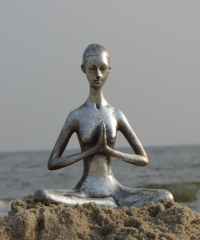 One of the best things about the Me-First School of Global Healing is that it is so motivating for my own health-care. As I sit here alone in my living room, I am deep in practice for the sake of everyone that I love, and even people that I don’t know yet. Every time I catch myself turning into a flustering, clucking Anxiety Chicken, I come back to my practices as an act of love for the whole community. This feels good!
One of the best things about the Me-First School of Global Healing is that it is so motivating for my own health-care. As I sit here alone in my living room, I am deep in practice for the sake of everyone that I love, and even people that I don’t know yet. Every time I catch myself turning into a flustering, clucking Anxiety Chicken, I come back to my practices as an act of love for the whole community. This feels good!
May you find and share unexpected wisdom during these times of great unknown.
Find part three of the series here, The Power of Stopping.
Want to join the discussion? Find the Perennial Medicine listserv here.

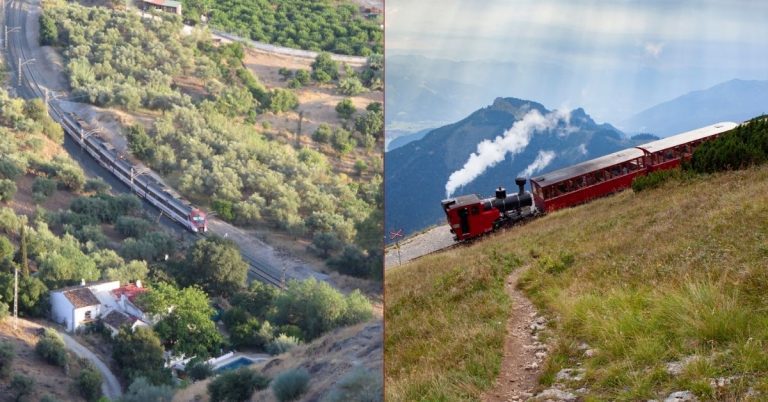
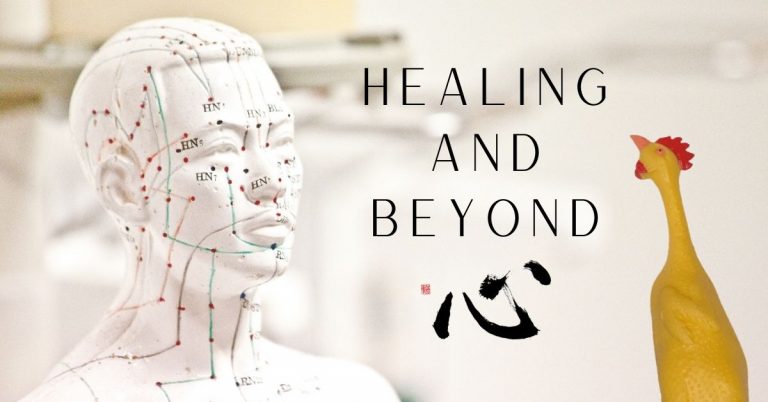

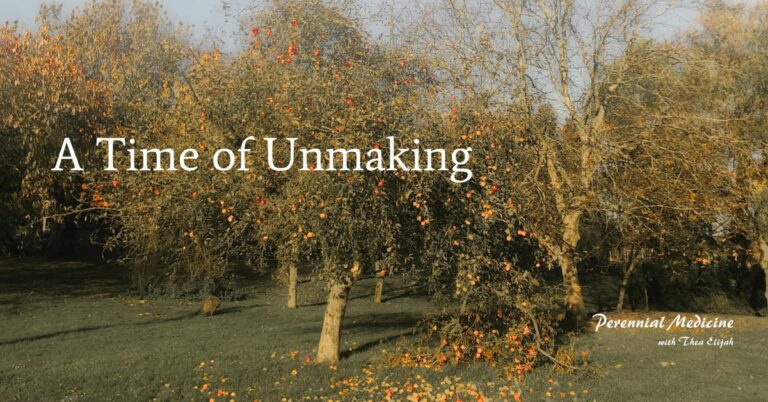


So grateful for your words and wisdom always and especially now. I go back to your teachings often and breathe, put both feet on the floor and then try to feel from that place. This situation is the work. Thank you Thea!
With love and light,
Kayla